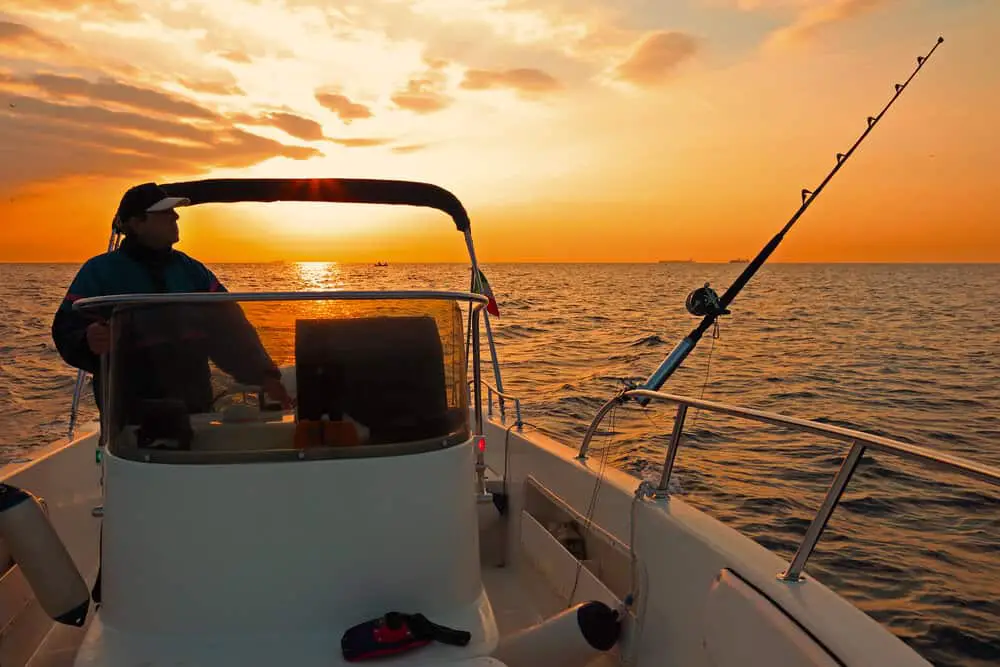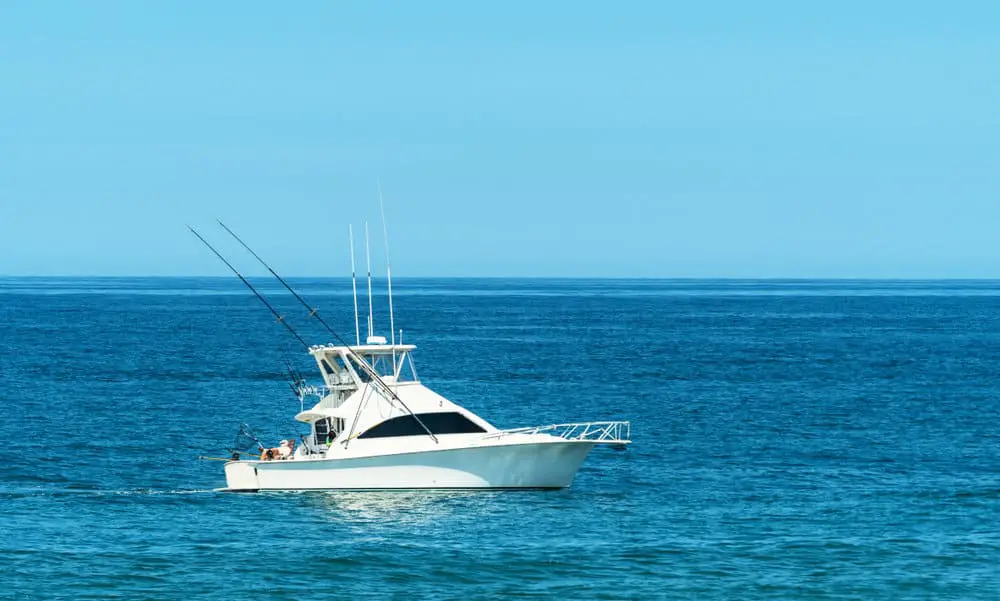How should you pass a fishing boat? While you should always pass on the left, there are a few more details to be aware of.
For example, you’ll have to signal the driver of the fishing boat and wait for them to give you the all clear. Then you’ll have to maneuver around their craft on the port side, making sure to go slowly.
What else do you need to know about this basic law of boat safety? Read on to find out.
While I’ve been fortunate enough not to have encountered a truly dangerous situation on the water, I know that it’s always best to be prepared. That’s why I decided to learn as much as I can about passing fishing boats in open water.
When fishing boats are at work, there could be fishing lines, ropes, or nets beneath the surface of the water. None of these things will be visible to you, but that doesn’t mean they’re not there. If you get tangled up in a rope or net, you could get stuck, damage either your boat or the fishing vessel, or even cause an accident.
In this guide, we’ll cover the following:
- Clear, concise guidelines on how to pass a fishing boat
- Tips on maintaining a safe boat speed while passing
- What to do—or not to do—in specific situations
Now that you know what to expect, it’s time to get started.
How Should You Pass A Fishing Boat?

Operating a watercraft is unlike driving a motor vehicle in that there are no hard and fast rules when it comes to right of way. That’s the first thing you need to remember.
Instead of strict operating guidelines, you’ll need to adhere to simple safety procedures. In other words, do everything you can to avoid colliding with other boats. Assuming that the other captain does the same, you should both be in good shape.
Signal
As soon as you encounter the fishing vessel, try to make contact with the captain. Unless they see you, you have no way of knowing if they’re aware of being passed. That can be dangerous if they decide to change direction while your vessel is in close proximity.
As we mentioned, you’ll need to pass on the port side. If you’re approaching the craft from their starboard side, sound your horn once. Two short blasts signify that you’re approaching from the port side.
Wait
After you’ve given your signal, you need to sit tight and wait for the other captain to give you the all clear. Be forewarned that you might be in for a long wait, depending on the nature of the fishing vessel.
A recreational fisherman that’s out for a casual day trip will probably be able to haul in their lines quickly. Commercial fishing boats or larger vessels, however, will take a long time to bring in their gear. In these cases, they might not bother to reel in, but they should let you know when it’s safe to pass.
It’s important to note that you should never pass a vessel unless the driver has given you a signal in return. Otherwise, you have no way of knowing whether or not they’ve seen your watercraft.
Pass On The Port Side
Although the rules for road vehicles and boats may differ in many ways, one element remains constant: passing on the left.
The captain of the other vessel will be expecting you to pass them on their left, or port, side. If you deviate from this, you’ll be creating a hazardous situation, as the other driver will be unsure as to what you might do next.
What’s more, passing on the port side allows the other captain a better view of your watercraft. This is always a good thing.
Of course, in some situations, it might be impossible for you to pass them on the port side. If this is the case, be sure to communicate with the captain of the fishing boat. They might already realize that you’ll need to pass on the starboard side based on their position, but it’s essential to make your intentions clear.
Slow Down
Make sure to decrease your boat speed when you pass another vessel. This rule applies to all boats, whether they’re dragging fishing lines along or not.
If you speed through the area too fast, you run the risk of leaving behind a huge wake. In addition to displacing the fishing lines and other gear, this could be hazardous to the people on board the fishing boat itself.
Even if you’re not attempting to pass, it’s common courtesy to reduce your boat speed when approaching another watercraft. For more information on maintaining a safe speed when passing, see the section below.
What’s The Ideal Boat Speed In This Situation?
Whenever you attempt to pass a fishing boat or other vessel, the captain should slow their boat speed as well. When both boats are moving more slowly, you’ll reduce the risk of producing a big wake.
In order to pass, you should travel about 2 knots faster than the other watercraft. Therefore, if the other captain slows their speed to 4 knots, you can easily pass them at 6 knots.
Of course, this number will depend on how much—or how little—the other driver is able to slow down. If they’re traveling at 8 knots, you’ll need to increase your speed to 10 knots. This situation isn’t ideal, so if you’re the one being passed, make sure to slow to 4 knots whenever possible.
Need help converting knots to miles per hour? Take a look at this informative video.
Special Circumstances
Some circumstances might make it impossible to pass a fishing boat using the safety tips we’ve included above. Here’s what you need to know about these special situations.
Head-On
When you face a fishing vessel head-on, it should be possible for either of you to pass one another on the port side. This is yet another example of the importance of clear communication.
First of all, slow your boat speed. Signal the other captain and make sure they’ve seen you. When attempting to pass, make sure to leave a reasonable distance between you and the fishing boat.
The actual safe distance may vary, depending on the respective sizes of your watercrafts. Use your best judgement.
Crossing
If the other vessel has no fishing lines or other gear in the water, the rules for passing are the same as they would be for any other watercraft.
However, if you cross a fishing boat’s path and they’re on your starboard side, you’re considered the “stand-on” vessel. That means you have the right of way and should stay on course while the fishing boat—the “give-way” vessel—yields to your passage.
On the other hand, if the other craft is approaching from your port side, you’ll have to yield to them until they pass you. Always follow the safety guidelines of signaling and slowing down—these don’t change in a crossing situation.
At Night

If you’ve ever boated by night before, you should already know that you can tell which way a vessel is facing based on the colored lights on the bow.
The light on the port side of the vessel is always red, and the starboard light is green. These colors can help you determine in which direction you should travel in order to pass a fishing boat at night, as well as which direction they’re headed.
Narrow Channels
Most fishing boats will be doing their work in open water, but you might also encounter them in tight quarters. If this happens, head toward starboard in order to create a wider gap between you and the other boat. The captain of the fishing boat should do the same.
In the instance that the channel is too narrow for the two of you to safely pass side by side, you’ll need to yield to the larger boat until they can navigate away from the area.
In Conclusion
Now that you know the proper protocol for passing a fishing boat, you’ll be able to take your vessel out on open water with confidence. As long as you remain alert and aware of the rules, you should be able to avoid any problematic situations.
Best of luck, and may you encounter calm waters ahead!
Project “Respect The Fishing Boats” Boating
Check out our article on: Boating At Night: (Things You Need To Know)

